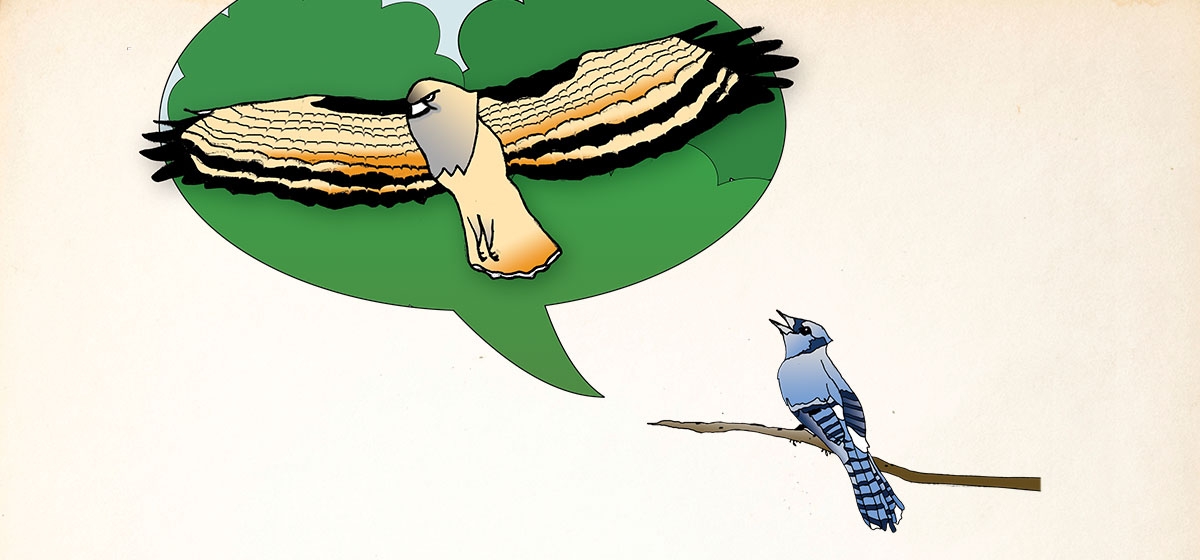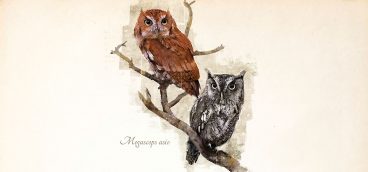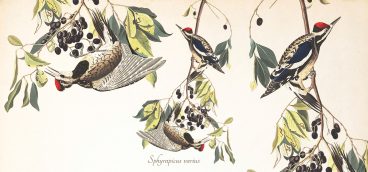
An avian chorus is warming up, a spring concert that begins with a quiet movement and builds to a wild paean to the dawn that almost bounces us out of our beds. Take some time to listen to the growing swell of sound, and since there is usually a relationship, note the habitat in which you hear it.
CDs and MP3s, typically from the world-renowned collection of the Cornell Lab of Ornithology, provide a basic audio library to help you match names to nature’s chorus. A good field guide lets you link sound and image.
Begin with more common and familiar songsters: chickadees and cardinals, crows and jays. Listen to their sounds, recorded and live, while the stage has yet to fill with visiting voices. All winter, dashing around bird feeders or peering down from icy branches, Black capped Chickadees chatter their name, “Chick a dee dee dee.” This is known as their call note, a brief utterance that implies, “Hi ya!” Songs serve a different purpose. As spring comes closer and days grow longer, chickadees add a territorial song, “Hey sweetie,” a tune they are compelled to sing by increasing light levels that trigger a release of reproductive hormones. Generally, singing is exclusive to males in most American bird species, their songs saying, “Hello, good lookin’. Come over to my place.” Songs convey the singer’s fitness, his ability to reproduce and his eye for prime real estate, safe, food rich home territory for a nest. Such songs also mean “Back off, buddy” to intruding males. And while it’s almost always males that sing, there are exceptions, such as female Northern Cardinals who perform duets with their partners.
American crows and blue jays have rather harsh calls and lack the musicality of smaller songbirds, but they share the ability to mimic the sounds of other birds. Thousands of crows that loudly caw and croak in Pittsburgh’s East End this winter will disperse as spring arrives, pairing up to reproduce. Blue jays, whose copied cries of red shouldered hawks and red tailed hawks scared smaller birds away from well stocked feeders or natural food sources in colder months, will likewise spread out and breed. Learning how these common birds sound will help you distinguish them, and then ignore them, when the full avian chorus performs later in the spring.
All birds produce sound in the same way. Rather than vibrating vocal cords, birds use specialized muscles to control the shape and resonance of a fleshy windpipe region called a syrinx. Modulating air pressure from the lungs allows birds to vary pitch and volume over a series of membranes, so complex in some species that multiple tones can be produced simultaneously.
Ornithologists who study avian bioacoustics believe call notes and songs in birds with simpler vocalizations take shape with some genetic guidance. Among the colorful, highly musical neo tropical migrants that will soon fill our skies, songs are learned and passed from adult to fledgling, much in the way human babies learn the language of those who raise them. Researchers have even begun to distinguish regional dialects. There is as much to hear this spring as there is to see. Don’t let this season pass without learning a little of nature’s language.





